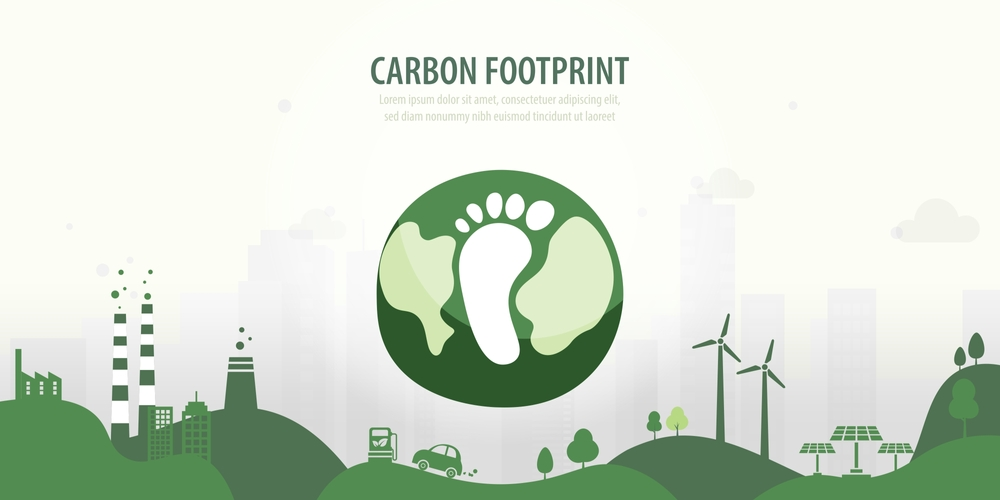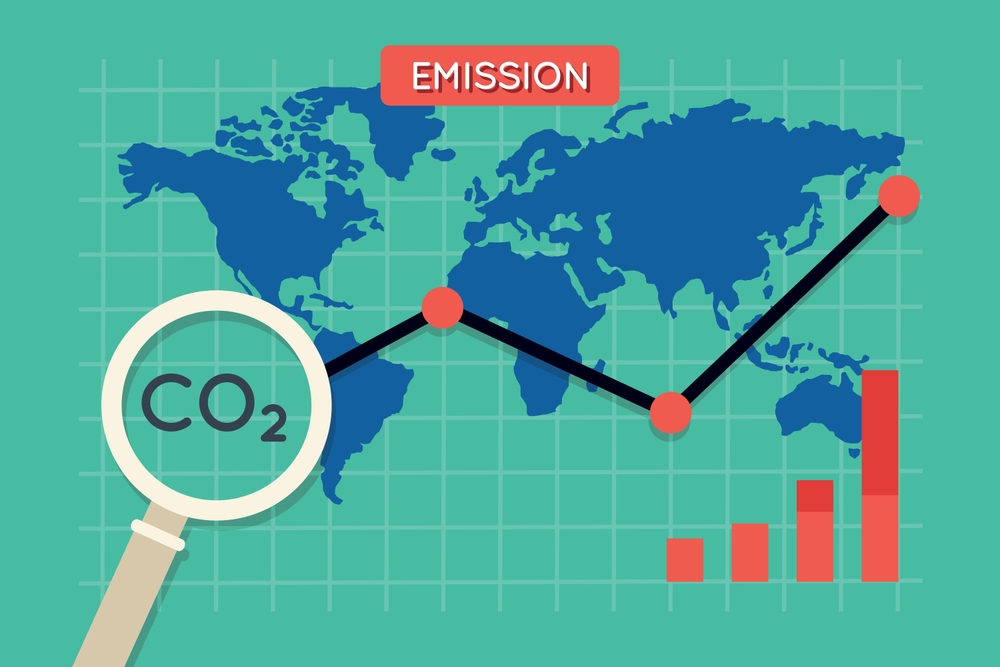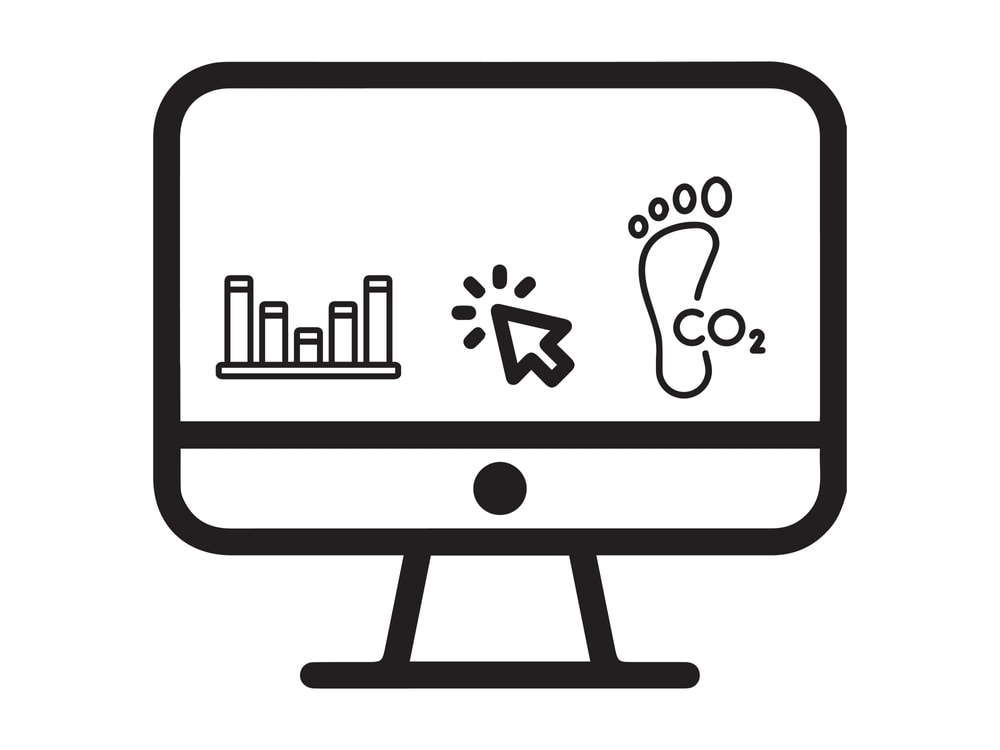
Understanding and mitigating your business’s environmental impact is critical in today’s world. After understanding what is carbon footprint, using a business carbon footprint calculator is a fundamental step towards sustainability. This guide explains the process, motivations, and methodologies for calculating your carbon footprint, providing a solid foundation for your sustainability strategy.
Why Calculate Your Business Carbon Footprint?
Using a business carbon footprint calculator is essential for several reasons. Calculating your carbon footprint involves understanding both climate impact from direct emissions and indirect emissions caused by your operations. Here’s a detailed breakdown of the benefits and motivations behind this important process.
1. Climate Change Mitigation
Understanding your carbon footprint is a crucial step in mitigating climate change. By using a carbon footprint calculator, businesses can identify areas with high carbon emissions and develop strategies to reduce them. This measure not only helps the environment but also aligns with global efforts to limit greenhouse gas emissions and combat the climate crisis.
2. Regulatory Compliance
Many regions around the world require businesses to report their greenhouse gas emissions. Accurate carbon dioxide footprint calculations ensure compliance with these regulations. Using a carbon calculator for businesses helps meet these legal requirements efficiently and accurately, avoiding potential fines and legal issues.
3. Stakeholder Transparency
Demonstrating your commitment to sustainability through transparent carbon accounting can significantly enhance your reputation. Stakeholders, including customers, investors, and partners, increasingly prefer to engage with environmentally responsible companies. Reporting your emissions data using a business carbon offset calculator showcases your dedication to sustainability.
4. Financial Savings
Identifying inefficiencies in your operations can lead to significant cost savings. For instance, reducing energy consumption, optimizing heating, cooling, and electricity use can lower operational costs. A detailed analysis with a free carbon footprint calculator for business highlights these inefficiencies and offers a pathway to financial benefits.
5. Risk Management
Anticipating climate risks and opportunities is vital for long-term business resilience. Understanding your carbon footprint and implementing carbon reduction strategies can help mitigate risks associated with climate change. This includes addressing the impacts of greenhouse gases on your supply chain, industrial processes, production processes, and overall business continuity.
Understanding Emission Scopes

Emissions are categorized into three scopes:
- Scope 1: Direct emissions from owned or controlled sources (e.g., company vehicles, on-site fuel combustion).
- Scope 2: Indirect emissions from the generation of purchased electricity, steam, heating, and cooling.
- Scope 3: All other indirect emissions in a company’s value chain (e.g., business travel, procurement, waste management).
Steps to Calculate Your Business’s Carbon Footprint
Step 1: Setting Your Boundary
Establish the operational boundaries for small business in your carbon footprint calculation. This involves deciding which parts of your business operations to include:
- Equity Share Approach: Account for emissions based on your share of ownership in an operation.
- Control Approach: Account for all emissions from operations over which you have control, either financially or operationally.
Consistency in applying these approaches ensures meaningful comparisons over time.
Step 2: Data Collection

Collecting accurate data is crucial. Here’s more detail how you can approach it:
- Activity Data: Quantitative measures of your business activities that generate emissions.
- Energy Consumption: Record electricity and fuel usage.
- Vehicle Use: Document mileage or fuel use for company-owned vehicles.
- Fugitive Gases: Track leaks of greenhouse gases from equipment, such as refrigerants in air conditioning systems.
- Emission Factors: Use databases (e.g., US EPA, UK BEIS) to find emission factors that convert activity data into greenhouse gas emissions. These factors reflect the emissions intensity of specific activities.
Step 3: Emissions Calculation
Calculate emissions by applying the collected activity data to the relevant emission factors. Ensure comprehensive coverage of Scope 1 and Scope 2 emissions, as per the GHG Protocol standards.
Leveraging a Business Carbon Footprint Calculator
A business carbon calculator simplifies this process by automating data collection and calculation. Here are the steps to effectively use a business carbon calculator or footprint calculator for business:
- Create a Business Profile: Input basic information about your business size, sector, and market.
- Add Business Data: Provide details on electricity, heating, fuel use, and other operational data.
- Review Emissions: The calculator generates a personalized dashboard showing a detailed breakdown of your emissions.
Using a carbon calculator for smaller businesses also helps streamline this process, ensuring compliance with environmental regulations and contributing to global sustainability goals.
Motivations for Using Carbon Calculators for Business
Businesses use carbon calculators for business to:
- Identify Emission Hotspots: Recognize which parts of the operation are the most emissions-intensive.
- Set Reduction Targets: Establish realistic and achievable emission reduction goals.
- Monitor Progress: Track improvements over time and adjust strategies as needed.
Challenges and Solutions in Carbon Footprint Calculation
Challenges:
- Data Collection: Gathering accurate data can be time-consuming.
- Complex Emissions Sources: Some emissions sources are difficult to quantify, especially in Scope 3.
- Resource Allocation: Small businesses might lack the resources to conduct detailed analyses.
Solutions:
- Utilize Technology: Employ automated tools and software for data collection.
- Engage Stakeholders: Collaborate with suppliers and partners to gather comprehensive data.
- Seek Expertise: Consider hiring consultants or using free resources from initiatives like the SME Climate Hub.
Importance of Transparency and Reporting

Transparency in reporting your carbon footprint builds trust with stakeholders. Use the findings from your business carbon footprint calculator to create detailed sustainability reports. These reports should:
- Highlight Achievements: Showcase areas where you’ve successfully reduced emissions.
- Identify Areas for Improvement: Be honest about challenges and future goals.
- Engage Stakeholders: Use the report to engage with customers, investors, and employees, encouraging them to support your sustainability initiatives.
The Future of Business Carbon Calculators
As technology advances, carbon calculators for business will become more sophisticated, offering real-time data analysis services and predictive modeling. Businesses will be able to make more informed decisions, integrating sustainability deeply into their core strategies.
Using a business carbon footprint calculator is a vital step towards sustainability. By accurately measuring and understanding your emissions, you can develop effective strategies to reduce your carbon footprint, comply with regulations, and enhance your reputation. Start your carbon reduction journey, today with a reliable carbon footprint calculator for business and contribute to a sustainable future.
